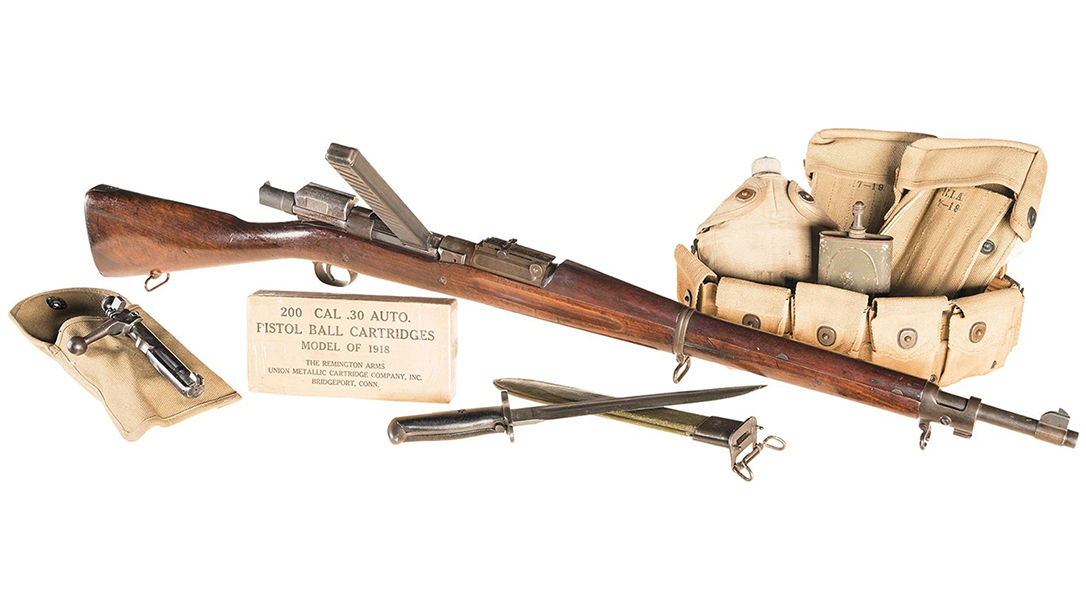John Pedersen better than John Moses Browning? In many minds, the title of this article would be the start of a drop-down, drag-out brawl. How dare you disparage the Browning name! Cool your jets, though, because the opinion is not mine … it’s actually Browning’s.
Yes, that’s right. Browning thought the world of John Douglas Pedersen, even telling Major General Julian Sommerville Hatcher, “Pedersen was the greatest gun designer in the world.”
Advertisement — Continue Reading Below
John Pedersen vs. John Moses Browning
When you look at Pedersen’s career and the timeframe in which Browning made his claim, it becomes much easier to see how he could have come to that conclusion. Born in 1855, Browning was 26 years older than Pedersen, who was born in 1881. Because of their age difference, Pedersen was likely seen by Browning as part of the next generation of great gunsmiths when he bestowed such kind words in the early 20th century.
In many ways, the two men’s careers mirrored one another. At the very least, Browning’s career afforded Pedersen a sturdy pair of shoulders on which to stand. Browning spent much of his career designing a myriad successful arms for Winchester.
On Jan. 8, 1902, Browning went to Remington to meet with company president Marcellus Hartley about what would become the Auto-5 shotgun. Unfortunately, Hartley died of a heart attack while Browning waited in the lobby to see him. As a result, Remington never made the shotgun. Pedersen, on the other hand, did spent much of his career designing successful arms for Remington.
Advertisement — Continue Reading Below
Winchester to Remington
More than 7,000,000 Winchester Model 1894 lever-action rifles, which were designed by Browning, have been made since their introduction. It is, arguably, the most successful lever-action rifle ever made. In an effort to cash in on that market demand, Remington tasked Pedersen to create a rifle in direct competition with the 1894. What resulted was the Remington Model 14. In production for 21 years, Remington produced the rifle at a rate of 6,000 guns per year for a total run of 126,000 rifles. It was a far cry from Winchester’s millions, but was certainly enough to deem it a successful and profitable model.
Winchester’s success often led to Remington’s replication. For instance, Winchester’s Browning-designed Model 1890 pump-action .22 rifle led to Remington’s Pedersen-designed Model 12. With approximately 832,000 made, the gun was a big hit for Big Green.
Military Arms
Like Browning, Pedersen, too, spent a good bit of his time developing arms for the military. The “Pedersen Device” first comes to mind. It turned the bolt-action Springfield Model 1903 bolt-action rifle into a semi-automatic that fired pistol-caliber cartridges. The device was slated to be pushed into service for the spring 1919 offensive of World War I. However, with the armistice taking place on Nov. 11, 1918, the offensive never came and the device never saw service.
Advertisement — Continue Reading Below
Pedersen also designed a handgun — the Remington Model 53 in .45 ACP — to compete with the newly-adopted, Browning-designed Colt Model 1911. Tested by both the U.S. Army and Navy, it received favorable reviews, but the services never adopted it. The Army dismissed it because Remington was already tooled up for a large 1911 contract. The Navy’s interest stemmed from a lack of 1911 availability, but cost ultimately killed the contract.
Pedersen also submitted a gun to compete in the trials for the M1903’s replacement rifle. Officially known as the T1E3 rifle, Pedersen’s entry was a toggle-lock design that fired rounds in his own .276 Pedersen caliber. It ultimately lost the rifle trials to a design by John Cantius Garand. After the M1 Garand’s adoption, Pedersen made less than 20 copycat arms based on the Garand design known as the GX and GY rifles.
During World War II, the partnership of Irwin-Pedersen produced 3,500 M1 carbines before the remainder of the contract shifted to Saginaw.
Advertisement — Continue Reading Below
Working Together
Pedersen and Browning were also not always friendly rivals; in fact, Remington’s Model 17 shotgun brought them together. Introduced in 1921, the 20 gauge pump-action shotgun was actually a joint creation by Browning and Pedersen. The success of that shotgun led to three other wildly successful shotguns: the Ithaca Model 37, the Remington Model 31, and the Browning BPS.
The two gunsmiths who had so much in common also had a commonality to their deaths. Both men died of heart disease; specifically, heart failure for Browning and a heart attack for Pedersen. Browning died in 1926 at the age of 71, while Pedersen died at the age of 70 in 1951. The former had more than 100 arms-related patents to his name, while the latter had 69 (nice) … no slouch, to be sure.
John Pedersen may not be as widely known as John Browning, but that doesn’t make his accomplishments to the arms industry any less impressive. To have Browning call him the greatest gun designer in the world is, without a doubt, the highest praise an arms designer could receive. If Browning thought he was the best, well, then that’s good enough for me. In my mind, that settles it; I’m not going to argue with a man whose middle name was Moses!
Advertisement — Continue Reading Below


























